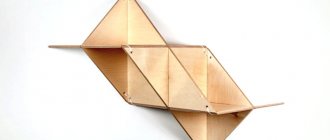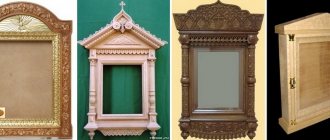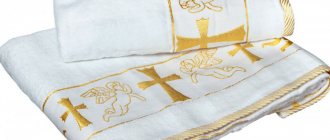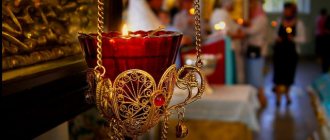Everyday
The censing is performed at the most solemn moments of the service. It can be full, when the clergyman walks around the entire temple with a censer, and small, when censing is performed in the altar and in front of the iconostasis.
Photo by Vladimir Eshtokin
Before censing, the priest blesses the censer and reads a prayer:
We offer the censer to You, Christ our God, into the stench (smell) of the spiritual fragrance, which is received into Your heavenly mental altar, bestow upon us the grace of Your Most Holy Spirit.
When a priest burns incense on a throne, icons, or other sacred objects, he gives God due honor and praise. The censer facing people symbolizes the blessing and descent of the Holy Spirit. In response to censing, it is customary to bow.
When a priest serves together with a deacon, the latter performs almost all incense. This is one of his main duties, along with reading special prayers (litanies). That is why, in the Orthodox tradition, a deacon is buried with a censer in his hands.
Tags
burn incense at home Incense burn incense with incense. incense incense incense incense.Belynichi Icon of GodMurom Icon of GodLesninsk Icon of GodIcon of GodMiraculous Icons of GodMiraculous Icons of God with IconsAtskur Icon of GodGerbovetsky Icon of GodMiraculous Icons of God censing.for burning incense, homemade censing with incense, censing can be done every Days of censing can be done under the conditions of censing with incense
iconincensesmellofholyincenseresinoilprocessconditionsofthegodmotherhomeancientcommentaryhomehealthdiseaserecipereadthenreal
History of origin
The division was established in the Old Testament by God himself. The Lord commanded Moses to make an altar for incense and gave clear instructions for its construction:
Holy of Holies in the Temple of King Solomon, 1995. Artist Zeliy Smekhov
And thou shalt make an altar for offering incense, of shittim wood thou shalt make it: the length thereof shall be a cubit, and the breadth thereof shall be a cubit; it must be quadrangular; and the height of it is two cubits; its horns [should come out of it]; overlay it with pure gold, the top thereof, the sides thereof, and the horns thereof; and make a golden crown around it; under his crown, at his two corners, make two rings of gold; make them on both sides of it; and they will be sheaths for poles to carry him on; Make the poles of shittim wood and overlay them with gold. And you shall place him before the veil that is before the ark of the testimony, against the mercy seat that is on the [ark] of the testimony, where I will reveal myself to you.
On it Aaron will burn sweet incense; every morning, when he prepares the lamps, he will smoke with them; and when Aaron lights the lamps in the evening, he will incense with them: [this] is an everlasting incense before the Lord throughout your generations. You shall not offer on it any other incense, nor burnt offering, nor grain offering, nor pour out any drink offering on it (Exod. 30:1–9).
Stationary censer, Byzantium-Syria, 6th century. Photo: https://ruvera.ru
The incense altar is a prototype of the modern censer. Initially, all censers were stationary and consisted of a large bowl on legs, into which burning coal was placed, onto which incense was poured with a special scoop.
In parallel with stationary censers, manual ones began to appear. In shape, they resembled a frying pan or a cylinder with holes on a long handle, into which everything needed for incense was poured.
What does the color of a candle mean?
Magic candles - there are so many of them and they are all so different. Different shapes, sizes, colors... Which candles to choose for this or that ritual, which ones to put on the altar to invoke the deity, and which ones to light for the success of a new endeavor? Probably, everyone who began to practice candle magic faced similar questions.
And while it is relatively easy to understand the purpose of the main types of magic candles (they were discussed in one of the previous articles), the correct choice of candle color often causes controversy even among experienced practitioners. Indeed, what does the color of a candle mean, what color should the candles on the altar be during a magical ritual - these are far from idle questions, since they largely determine the success of the entire ritual.
Let's try to figure out what role the color of candles plays in magic and how to choose the right candles for a specific ritual. First of all, it should be said that there is no one absolute set of rules regarding what the color of a candle means. Different cultures of different peoples have their own ideas about color matches. If in Christian Europe the color white is traditionally perceived as a symbol of purity, innocence and divine grace, then in the countries of the East it is often the color of death and mourning. If for a person of Slavic culture the color black is the embodiment of darkness, nightmares, evil and curses, then for an African it is a symbol of night passion, sex and fertility.
For an adherent of Western European ceremonial magic, formed on the basis of the Gnostic teachings of the East, alchemical works and Christian ideas, blue/dark blue is the color of the endless sky, lofty aspirations, truth, fidelity, chastity and justice. And for the typical Santeria fan from Brazil, the color blue is a symbol of the beautiful sea goddess Yemanja, mother of all orishas, patroness of family, motherhood and protector of children.
In other words, when choosing candles for equipping a magical altar and performing rituals, it makes sense to take into account the characteristics of the magical (religious) movement within which the work is being carried out. At the same time, you need to keep in mind that in modern magic there are certain stable ideas about what the color of a candle means, which are quite universal and can be applied in most cases.
Modern look
Photo by Ilya Svinkovsky
Christians began to use censer during worship starting in the 6th century. They were similar in shape to modern ones: it was a small bowl or sphere on three chains that were connected together. Initially there was no lid - all the elements were of practical importance.
Censer, Byzantium, 6th century. Photo: https://ruvera.ru
Censers with chains came to Rus' from Byzantium in the 11th century. In the 15th century, they took on the form of a temple: a lid in the form of a church dome with holes for air and incense, which ended with a cross, was added to the coal bowl.
Censer, Moscow, late 15th century. Photo: https://ruvera.ru
A 4th chain was attached to it, with which you can lift the lid up and gain access to the coal bowl. The modern censer in the Orthodox Church looks exactly like this.
Making coal for the censer
Coal for censer
1. Preparation of raw materials.
Dry deciduous wood (coniferous is not allowed, because there is too much resin, and if it smolderes there will be nothing to breathe in the room) cut into smaller pieces. We used a circular saw to make small blocks no larger than 10 cm in diameter. We take a metal barrel, tank, bathtub - it doesn’t matter, the main thing is that it doesn’t have holes, so that there is no air flow from below and it can be more or less hermetically sealed from above. We add some wood and set it on fire, preferably without using flammable liquids. When everything flares up and the firewood is slightly charred, add a new layer of firewood so that the flow of oxygen to the bottom layer decreases. We do this until we run out of wood or until we reach the top of the container. I’ll just repeat - you need to burn each layer before the top layer of wood is visible charred. When the last layer is charred, close the container with a metal lid (a tin, for example), and on top, to stop the access of oxygen, with a wet rag; we used a bag or an old coat. The rag will not catch fire if you then pour more water on it several times. If you find a chemical barrel with a large closing lid, it will be easier and more convenient.
Katsia
Photo: https://ruvera.ru
Katsia is a hand censer in the shape of a ladle. It was used in ancient times in the East and in Rus' before the advent of censers with chains.
Katsia on the miniature “Funeral service and burial of Prince Vladimir Volodarevich.” Radzivilov Chronicle, end of the 15th century.
Katsia is still used during services in the Greek Church and by Old Believers; it is practically not used in the Russian Orthodox Church.
The shape of the censer, which is used by the laity at home during prayer, is very similar to the cation.
Incense
Incense is an aromatic tree resin and incense. When burned in a censer, it symbolically expresses man's reverence for God.
After the birth of Jesus Christ, the wise men brought Him gifts of gold, incense and myrrh. These gifts are prophetic and symbolic - in particular, incense was presented to the Savior as the High Priest and God.
Incense
Real incense is the resin of a rare tree, which we call Lebanese cedar. To get as much of it as possible, small cuts are made on the tree trunk from which it flows. The hardened resin is collected, crushed and mixed with water and aromatic oils.
The resulting paste is rolled out and cut into small pieces, which are sprinkled with white powder - magnesia. This is necessary so that the incense, when stored in the package, does not stick together into one lump and you can take the right amount. Nowadays incense is made from different types of oriental trees.
WHY FUMIMIZING A PREMISES DOES NOT ELIMINATE EVIL FORCES
Recently, it has become popular to call a priest from the church to bless a home, fumigate a room, and the like. This is not surprising, because such rituals provide income to the church. Many people believe that by inviting a clergyman, they will cleanse the house of evil spirits. Well, of course, the priest came, shook the censer, and the evil spirits were gone...
Ah, simplicity, which is worse than theft!
The famous specialist in Occultism, Paracelsus, wrote 550 years ago: “... the smell of incense can attract rather than drive out evil spirits. For they are attracted by what is attractive to the senses, and if we wish to get rid of them, then it would be more reasonable to use for this purpose aromatic substances that repel them. The most effective force against all evil spirits is the will.”
So, you have a suspicion that an evil spirit has settled in the house. What will you do? You can go to church, invite a priest and attract even more evil energies. You can leave everything as it is. Evil forces do not go away on their own (if they feel good in your home). You can contact a specialist sorcerer who will expel these energies. You can learn and carry out energy cleansing yourself.
When choosing which path to take, you need to know that that specialist (in or without a cassock, with or without a cross on his neck) must repress the evil energetically. At the same time, the Master himself becomes very tense, sweats, yawns, as if removing damage.
Another option is to clean your home by displacing energy from objects (I prefer to displace it from salt). In this way, it is possible to clean the room; it is only important to carry out the ceremony correctly.
In any case, when ordering home cleaning, pay attention to what is more - energy, volitional efforts or theatricality, ritualism. If there is more ceremony, and the priest himself is not very tense, consider that you have invited even more evil energies. The same Paracelsus wrote about this:
Cistus
Incense. Copper, casting, filigree enamel. Veliky Ustyug, XVII century.
In the ancient Church, incense was kept in a special incense box in the altar of the temple. As a rule, this is a small metal box of regular geometric shape with a dome-shaped lid.
Incense in the shape of a five-domed temple with floral ornaments. Photo: https://ruvera.ru
Nowadays there is no mandatory practice of storing incense in it.











